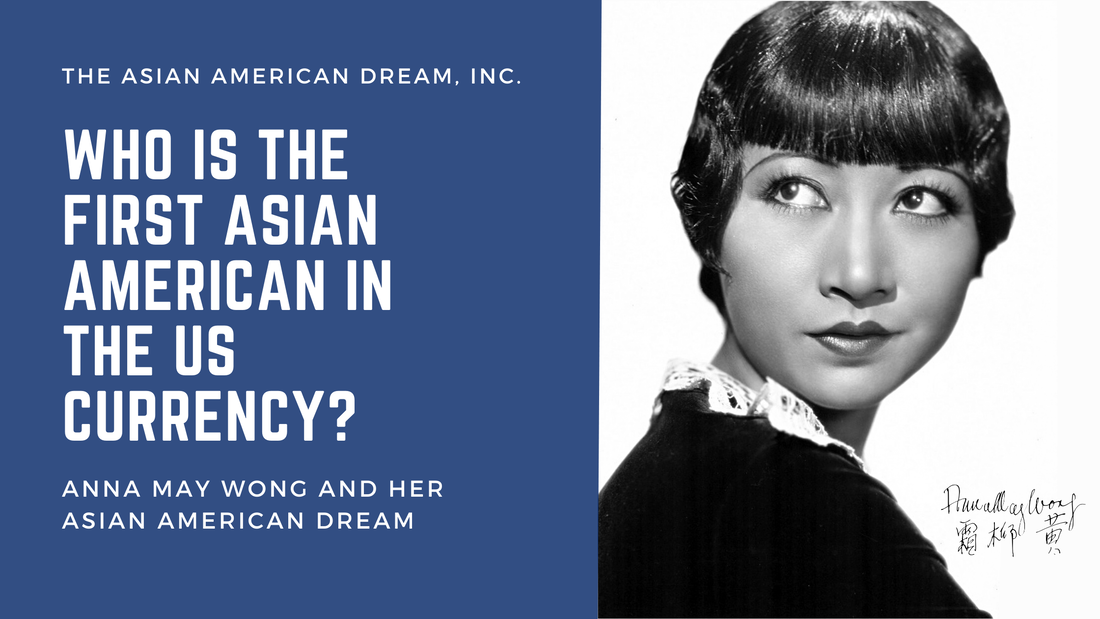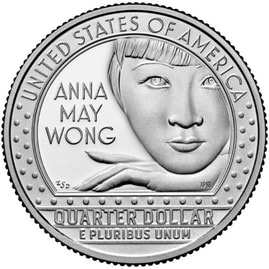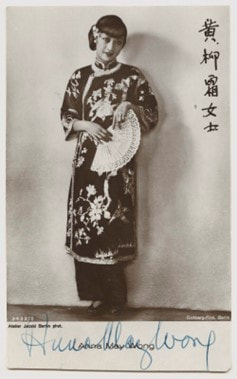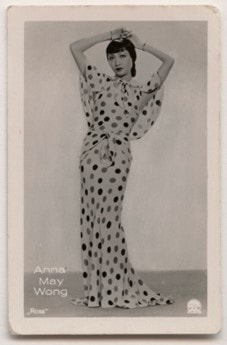Who is the First Asian American in the US Currency? – Anna May Wong and her Asian American dream1/18/2023
Wednesday, January 18th 2023 By Minghuang Wang On October 24th, 2022, Anna May Wong (January 3, 1905 - February 3, 1961) became the first Asian American to appear on the US quarter coin. She was also the first Chinese American film star in Hollywood. Added the year to be specific for this monumental time! According to Biography, Anna was born into a second-generation Chinese American family in Los Angeles, California. Her parents, Wong Sam Sing and Lee Gon Toy, and her grandparents arrived in California before immigration from China to the United States was restricted at the end of the 19th century. Her family gave her the English name Anna May, but her birth name was Wong Liu Tsong (黄柳霜). “Liu” directly translates to the willow tree, and “Tsong” means frost and snow in Chinese. Like her name, Anna grew out of adversity in her dream acting career. In 2021, Anna May Wong was chosen among five pioneering women to appear on US coins as part of the “American Women Quarters Program,” launched in March 2022. According to the United States Mint, the other featured trailblazersin civil rights, the arts, and science are Maya Angelou, Sally Ride, Wilma Mankiller, and Nina Otero-Warren. changed from trailblazer to trailblazers Image Source: United States Mint, “American Women Quarters Coin Anna May Wong Proof Reverse,” 2022. Accessed via: https://www.usmint.gov/coins/coin-medal-programs/american-women-quarters/anna-may-wong Anna was an impactful pioneer in the Asian American community who broke into the American media industry, despite its sexist, racist, and unfair representation throughout history. MOCA comments that “Hollywood deemed her race as unfitting for a leading lady,” in which Anna partook many racist supporting roles. She was passed over time after time for leading Asian characters played by white actresses. Such a racist phenomenon in Hollywood has been known as yellowface, in which white actors wear makeup or stereotypical costumes to approximate Asian characteristics in roles. Kendall Trammell criticizes Blackface, brownface, yellowface, redface, or any colored face are problematic because of the painful history for Black and African Americans and other racial groups. Those colored faces in the media reinforce dehumanized stereotypes of people of different racial and cultural backgrounds. Anna May Wong was also the first Asian American actress to gain international recognition and fame after moving to Europe for her acting career. Upon her return to the U.S. in 1930, the Chinese Exclusion Act was still in place, Anna was asked to go through Immigration and Naturalization Service and had to prove her identity for re-entry. In the performing industry, she opened an unknown door for herself. But she also set up spaces for many who came from marginalized backgrounds, especially Asian Americans in the acting and film entertainment industry.
Anna May Wong may have experienced a thousand deaths in the fictional world, silently killed by those who hold power and decision on whom she plays. Her characters may have been untold, unseen, or forgotten because of systemic racism and the (mis)representation of women like her. Nonetheless, her story of who she is and her legacy as the first Chinese American on the screen of Hollywood, and her tremendous contributions to Asian American history will continue to make an impact and uplift generations to come. Now, we celebrate such transformative change and Anna’s everlasting figure in the US currency. Her works of art and films will continue to tell the story of America. Her memories and recognition will guide many Asian Americans to continue paving their Asian American dreams. Anna May Wong, by Atelier Jacobi, bromide postcard print, late 1920s, NPG x160611. © National Portrait Gallery, London Anna May Wong, published by Ross-Verlag, bromide cigarette card, 1930s, NPG x196481. © National Portrait Gallery, London Sources:
Comments are closed.
|
AuthorsDorothy Chan Archives
July 2023
Categories |
AAD is a 501(c)(3) nonprofit organization
Federal Tax ID: 87-1056467
© The Asian American Dream, Inc. All rights reserved.
Federal Tax ID: 87-1056467
© The Asian American Dream, Inc. All rights reserved.




